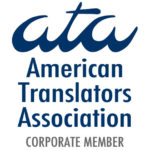With growing opportunities for foreign trade and investment in Brazil, the demand for Portuguese translation, particularly in the industrial/commercial sector, has increased markedly over the last several years. A robust economy and favorable business climate combined with the country’s burgeoning middle class present an interesting opportunity for corporations looking to expand their operations into South America. Although Brazil is the sole Portuguese-speaking country in the Americas, approximately one-half of South America’s inhabitants speak the language. The key to accessing Brazil’s population of roughly 190 million will be through translation to and from Portuguese.
As the citizens of Portuguese-speaking countries become increasingly connected to the Internet, companies must begin to consider the importance of having a Portuguese presence on the web. For example, Internet access is growing at breakneck speed in Brazil, even among the poor. Companies looking to break into or strengthen their position with the Portuguese-speaking market would be wise to cultivate an Internet presence em português.
As the site of the 2014 FIFA World Cup and the 2016 Summer Olympic Games, Brazil will experience a massive tourism boost over the next few years. Although English and French are the official languages of the Olympics, translation from Portuguese to a host of other languages will be necessary to accommodate the scores of foreign athletes, tourists and journalists who will travel to Brazil for these events.
While Brazil is eager to attract visitors from abroad, the nation’s growing middle and upper classes enjoy traveling as well. According to BuyUSA.gov, with Brazil’s “economic growth prompting more middle-class travelers, growth [in travel to the U.S.] seems likely to continue for many years.” In addition, “Brazilian travelers are among the biggest spenders when traveling to the U.S., averaging $3,557 per traveler.” Business owners looking to attract Brazilian visitors should consider translating marketing materials into Portuguese.
It is also worth noting that UNESCO has recognized Portuguese as one of the fastest growing European languages. Additionally, the language’s expanding influence in South America and southern Africa mean that Portuguese demonstrates significant potential as a language of international communication. The language is also experiencing a resurgence in popularity in certain parts of Asia including East Timor and Macau. Businesses looking to capitalize on opportunities in these emerging markets are wise to consider Portuguese translation.
More information on the Brazilian Economy and Portuguese Language.
Are you looking for a Portuguese Translator? Visit TransPortuguese.




